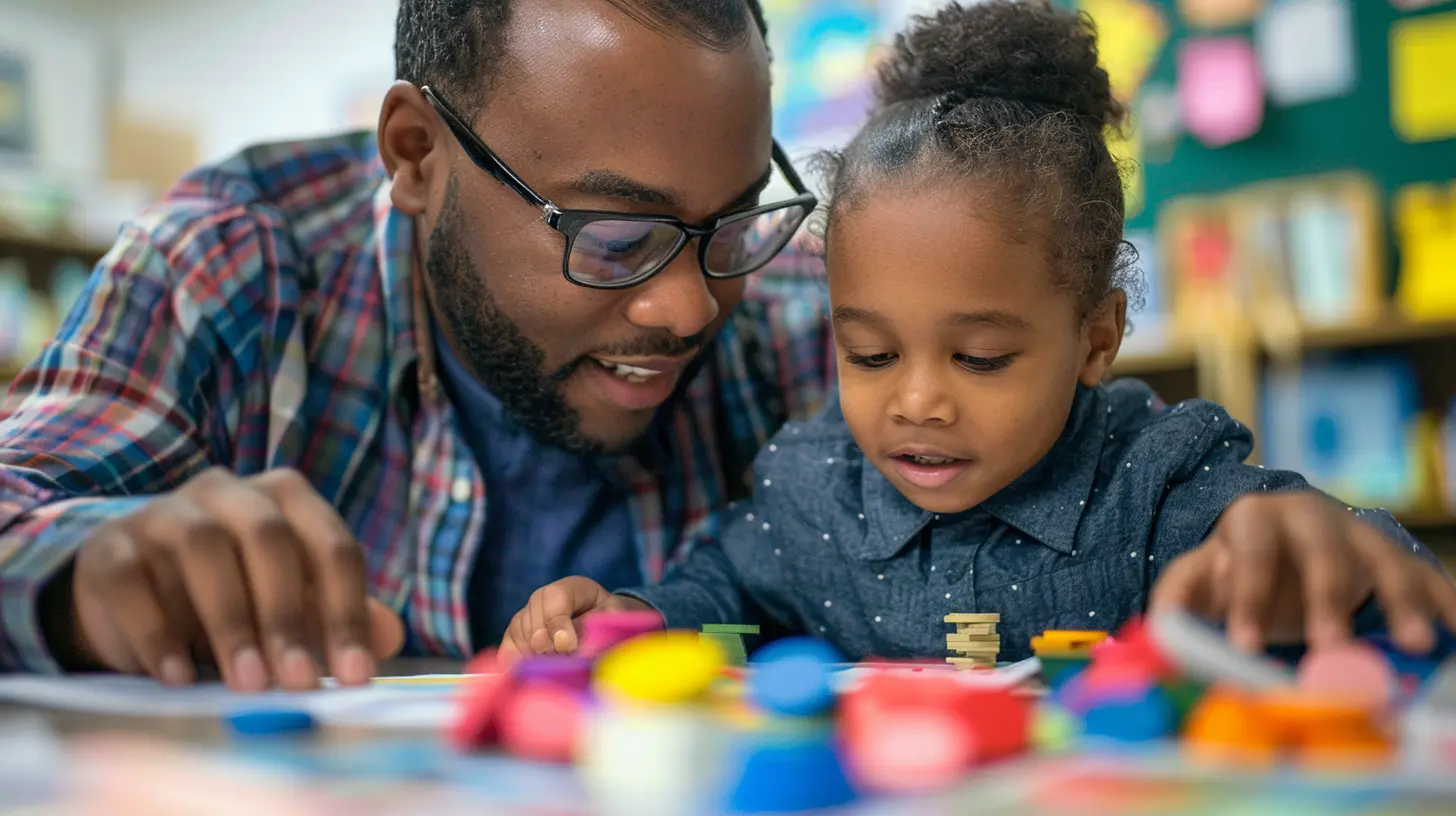Why Financial Literacy Should Be Taught in Every Classroom
6 June 2025
Picture this: a high school senior graduates with excellent test scores, a good GPA, maybe even a few college offers. But throw in a credit card offer, student loans, or a job paycheck, and suddenly everything gets confusing. Why? Because while they can solve algebra equations or analyze Shakespeare, they’ve never been taught how to manage money.
That’s a problem. And it’s one we need to fix—now.
Let’s talk about why financial literacy should be taught in every classroom. Not just as an elective shoved in the back of the course catalog, but as a critical life skill every student is required to learn.

What Is Financial Literacy Anyway?
Before we dive in, let’s clear this up: financial literacy is not just about knowing how to save money. It’s a broad set of skills and knowledge that helps individuals make smart financial decisions. Think budgeting, saving, investing, managing credit, planning for retirement, understanding taxes—you get the idea.In plain English, it’s knowing how to navigate the money world without sinking.
Students need these skills just as much as they need to read or write. After all, they'll use money every day of their lives.

The Gap Between School and Real Life
Let’s be honest—how often have you heard someone say, “I wish they taught me how to do my taxes in school"? Or, “I had to learn budgeting the hard way”?That’s the gap we’re talking about. Schools do a decent job prepping students for academic paths, but when it comes to life skills like managing money? Crickets.
The result? Young adults entering the real world financially clueless. They’re easy targets for poor financial decisions like massive credit card debt, overspending, and under-saving.
And let’s not even get started on predatory loans, get-rich-quick scams, or pyramid schemes. Without basic financial knowledge, those can be hard to spot.

Financial Illiteracy Has Real Consequences
You might think, “Okay, so what if someone doesn’t know how to budget? They’ll figure it out eventually.”Well, here’s the thing—they might, but not before making costly mistakes. Financial illiteracy can lead to:
- Crushing credit card debt.
- Defaulting on student loans.
- Poor credit scores affecting job and housing opportunities.
- Inability to save for emergencies or retirement.
- Living paycheck to paycheck.
Financial stress doesn’t just stay in your wallet. It affects mental health, relationships, and even physical well-being. Teaching kids early can help prevent that.

Why Start in the Classroom?
Some people argue that financial education should start at home. Makes sense, right? But there’s a catch—not everyone grows up in a household where financial literacy is the norm.In fact, many parents themselves struggle with money and may unwittingly pass on bad habits. Schools are better equipped to provide consistent, accurate information.
Every student deserves access to the tools they need to thrive—not just academically, but financially. And where’s the one place all students go? That’s right—the classroom.
Early Exposure Builds Better Habits
Think about it: habits are easier to build when you’re young. If we teach kids the basics of money early on, they’re more likely to adopt responsible financial behaviors.It’s kind of like brushing your teeth. You were probably taught to do it as a kid, and now you (hopefully) do it without thinking. Why shouldn’t managing money be the same?
Make it fun. Interactive. Maybe even gamify it—budgeting apps, stock market simulations, or real-world money challenges. Let students learn by doing, not just memorizing.
Financial Education Encourages Independence
There’s something empowering about being in control of your own money. It builds confidence, encourages independence, and helps students transition into adulthood with a lot less stress.They won’t need to rely on parents or Google for every money question. They’ll know how to:
- Open a bank account.
- Create a budget.
- Build credit.
- Save for short- and long-term goals.
- Avoid debt traps.
These aren’t just useful skills—they’re essential.
Leveling the Playing Field
Not every student starts life on the same financial footing. Some grow up with trust funds; others worry about how their family will pay the rent. Financial education can help level the playing field.It gives all students—regardless of background—a fair shot at financial stability. We talk a lot about equality in education. This is a key part of that.
When we teach financial literacy, we’re not just teaching money management—we’re teaching life management.
Real-World Connections Across Subjects
Believe it or not, financial education fits nicely into other subjects, too.- Math? Apply percentages to interest rates and savings.
- Economics? Discuss inflation, supply and demand, or investments.
- English? Analyze financial news articles or write persuasive essays on economic issues.
- History? Explore how financial systems have shaped civilizations.
Financial literacy isn’t a standalone topic—it can stretch across the entire curriculum and make other subjects more relevant.
Bracing for the Future
Let’s face it—the financial world is evolving fast. Cryptocurrencies, fintech apps, online banking, mobile wallets—today’s teens are growing up in a digital financial environment.They need to understand not just traditional finance but also future trends. What happens when cash disappears? What’s the risk of “buy now, pay later” apps? Is investing in digital coins a smart move?
Teaching financial literacy prepares students to make smart decisions in both today’s economy and tomorrow’s.
Teachers Want It. Parents Need It. Students Deserve It.
Study after study shows widespread support for financial literacy in schools:- Teachers want training and tools to teach these topics effectively.
- Parents wish they had learned money skills earlier and want better for their kids.
- Students crave real-life knowledge they can actually use.
It’s a rare topic everyone agrees on. So why isn’t it in every classroom yet?
It’s time for education policy to catch up with reality.
What Should a Financial Literacy Curriculum Include?
Okay, let’s get practical. What, exactly, should we teach? Here’s a solid starter list:- Budgeting basics (income vs. expenses).
- Saving and emergency funds.
- Banking (checking and savings accounts).
- Credit and debt management.
- Interest rates and compound interest.
- Student loans and financial aid.
- Investments and retirement planning.
- Taxes 101.
- Consumer rights and fraud protection.
And yes—use real-world examples. Let students see how these things affect their daily lives.
The Long-Term Payoff
Here’s the kicker: teaching financial literacy isn’t just good for individuals. It’s good for society as a whole.Financially literate citizens are:
- Less likely to rely on government assistance.
- More likely to contribute to the economy.
- Better prepared for retirement.
- Less prone to economic panic during financial crises.
It’s like planting seeds of stability and watching a more secure future grow.
We Can’t Afford to Wait
The cost of doing nothing is too high. Every year we delay teaching financial literacy, more students graduate unprepared for the financial reality that awaits them.Let’s break that cycle. Let’s turn “Why didn’t they teach me this in school?” into “I’ve got this.”
Financial education isn’t a luxury—it’s a necessity. It should be in every classroom, for every student, starting as early as possible.
Because when students understand money, they don’t just survive—they thrive.
Bottom Line: Money Smarts Are Life Smarts
No matter what career a student pursues, money will be part of their journey. Doctors, artists, teachers, engineers—they all need to manage their finances.Let’s stop treating financial literacy like an optional life skill. It’s not. It’s as important as reading, writing, and arithmetic.
So, ask yourself this: If we truly want to prepare students for the real world, how can we ignore something as fundamental as money?
We can’t. And we shouldn’t.
Let’s give the next generation the tools they need to build not just a career, but a life they can afford and enjoy.
It all starts in the classroom.
all images in this post were generated using AI tools
Category:
Financial LiteracyAuthor:

Anita Harmon
Discussion
rate this article
3 comments
Candice Blair
Oh, absolutely! Because who wouldn’t want to spend their precious school days crunching numbers and deciphering budgets instead of learning that the mitochondria is the powerhouse of the cell? Clearly, calculators and interest rates are what every child dreams of!
June 19, 2025 at 3:42 AM

Anita Harmon
While I understand your passion for traditional subjects, financial literacy equips students with essential life skills that can empower them in their personal and professional futures. Balancing both practical knowledge and academic learning is crucial for well-rounded education.
Morgan McFarlane
Empowering students with financial literacy today ensures smarter, more responsible decision-makers for a sustainable tomorrow. Invest in education!
June 11, 2025 at 2:24 AM

Anita Harmon
Absolutely! Financial literacy equips students with essential skills for a sustainable future, fostering responsible decision-making and long-term success. Investing in their education is crucial.
Eliza Miller
“Because counting pennies is more fun than counting sheep!”
June 9, 2025 at 7:52 PM

Anita Harmon
Absolutely! Engaging with money concepts early makes financial literacy enjoyable and essential for future success!


